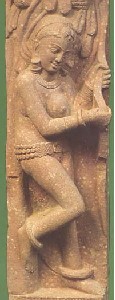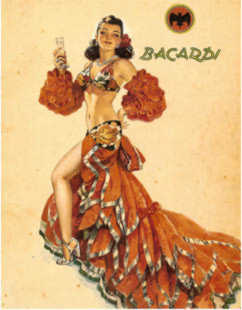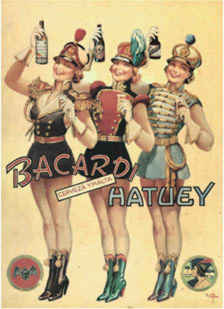
 Neglected
Garden Of Eden
Neglected
Garden Of Eden

 Neglected
Garden Of Eden
Neglected
Garden Of Eden
|
The Anatomy Of Female Psyche has clearly shown us certain lack of female sex hormones (estrogens) in the present women, which makes them ill, demanding, and burdensome for the surrounding people.
All those take place because female health is devoid of its natural support (estrogens), which would return women into the true norm, and allow them to enjoy themselves.
There are also plant substances chemically different from female sex hormones but acting like them although thousands times weaker. The latter substances seem me to be of little value for human females as those lack just proper estrogens. On the contrary, these substances attract much bigger commercial interest because they are found not in commonly consumed cultural food plants, and so one could make money on them. The soy presents an outstanding exception; however, this plant has large associations of growers.

In Greek mythology, some group female deities such as Heliades, Hesperides, Dryads, Meliads a. o. are firmly associated with frees.
Also the legend of the
Hanging Gardens of Babylon seems me very noteworthy in this
regard as it portrays a very beautiful woman (Amytis) missing the vegetation of her
native country very much. So, a quite physical natural cause underlies this cultural phenomenon. Here is a list of the few plants containing substances just identical to female sex hormones. According to varied sources this group of plants includes
It's easy to see that almost all these plants are enough common in the traditional agricultures. Even licorice root presents practically a food plant and is very much appreciated in the Western countries. They also take significant place in cultural traditions varied nations, which clearly connect these plants with femininity and fertility. So, folklore of the Middle Eastern countries carries interesting mention of effects of the date palm on women. According to the Koran, dates have always been considered beneficial to mothers. So, when Marium (Virgin Mary) had given birth to the Prophet Isa (Jesus Christ) under a palm tree, she heard a voice telling her: Shake the trunk of the palm tree towards thee: it will drop fresh, ripe dates upon thee. Eat, then, and drink, and let thine eye be gladdened! The link between the date palm and sexuality/femininity has been imprinted also in some medieval European pictures, of which visual themes, apparently, had come from the Middle East:
|
 |
 |
 |
|
And this property of them is reflected in folklore very much. For instance, in the tale of The Princess And the Pea by H. C. Andersen the princess' sides hurt from the pea. It is a metaphor. Her hips hurt because they were wide owing to the action of phytoestrogens of peas she ought to have eaten before for long time.
Besides this, the sisters did her every imaginable injury — they mocked her and emptied her peas and lentils into the ashes, so that she was forced to sit and pick them out again. In the evening when she had worked till she was weary she had no bed to go to, but had to sleep by the hearth in the cinders. And as on that account she always looked dusty and dirty, they called her Cinderella.The awareness of significance of legumes that ought to be responsible for Cinderella's success in stealing the prince's heart has been lost in the tale. However, only licorice and French beans contain substances identical to the human (and animal) hormones. I would like to pick out licorice among all the plants containing steroid phytoestrogens. It contains much phytoestrogens, and displays explicit estrogenic properties. Further, it inhibits conversion of testosterone that is responsible for sex drive of both men and women. In this regard, it's interesting that Hepatitis Central, at one time in Germany, Licorice was a more popular gift between lovers than chocolate as it was reputed to sexually arouse women. It stimulates production of corticoids. Thanks to the latter property licorice retains water in human bodies and was esteemed for that in deserts. In other words, it is as though designed by the Nature to remedy the common female hormonal disturbance that consists in certain lack of hormones of those three groups. So, it seems to be not casual that licorice is very much appreciated in the Western countries. I had opportunities to observe the benefits of licorice in women in few minutes after intake, and therefore I highly recommend you this almost food herb as very important for true female health. Of course, you should keep in mind the Side Effects and Warnings.
According to Greek myths of the Garden
of the Hesperides. These nymphs guarded the sacred golden apple tree that
grew in the garden. Besides, the garden was Gaia's (the Earth) wedding gift
for Hera.
Furthermore, Aphrodite, the goddess of love and female beauty would often help young people in love: Atlanta, a virgin huntress who remained always under arms, used to force her wooers to race before her and if she caught them she would put them to death, but if anybody would survive she would marry him. But Melanion came to the race bringing the golden apples that Aphrodite had given him. He dropped the apples as he was running, and because Atlanta could not help to pick up the fruit she was beaten in the race.
It's also interesting that in ancient Rome newly wed women wore headdresses made from pomegranate twigs, and its juice was consumed as a remedy for infertility. Modern researches have revealed that feeding rats, pigs and mice results in very significant decrease of the birth in the populations of those animals (see the article The Effects of Punica granatum on Fertility of Mice) In addition, like licorice, pomegranates have the property to retain water in human body. This property was used since the earliest times and the fruit was carried by desert caravans for the sake of its thirst-quenching juice. The use of this property of pomegranate is also imprinted in Greek mythology in the famous story of Persephone. According to the story, after Hades (Pluto) abducted Persephone, the people of earth prayed to Zeus to intervene. Zeus released that if humanity died out there would be no one to worship the gods, so he told Hades to release Persephone. However, since Persephone had been following her mothers mourning fast, refusing to eat or drink. Pluto, in sly kindness, offered to let Persephone go, but first tempted her great thirst by offering her pomegranate seeds. Since pomegranate was symbolic of sexual consummation, Persephone’s consent rendered her marriage to him indissoluble. By the way in Hades' trick we can recognize a reflection of use of pomegranates for increasing female libido, as a kind of love potion.
Besides, it seems possible that just pomegranates were responsible for the power of Libyan Amazons
relates how just a few juicy pomegranate seeds were charm enough to bind
Persephone to her husband, Hades, and his realm of the Underworld. However, the action of the plant estrogens can be blocked by cholesterol, the substance similar to estrogen but devoid of its properties that is a part of almost any animal food. Thus, women should not only consume plants containing substances identical to female hormones, but also not to consume animal food containing the substance mimicking the hormones. In other, words women (as well as men) should adhere to vegetarianism — the naturally intrinsic human way of eating. So, animal food presents one more extravagant useless and even harmful thing women turn out not to need in point of fact. The transition from the original human vegetarianism to the animal-eating was the crux of the |